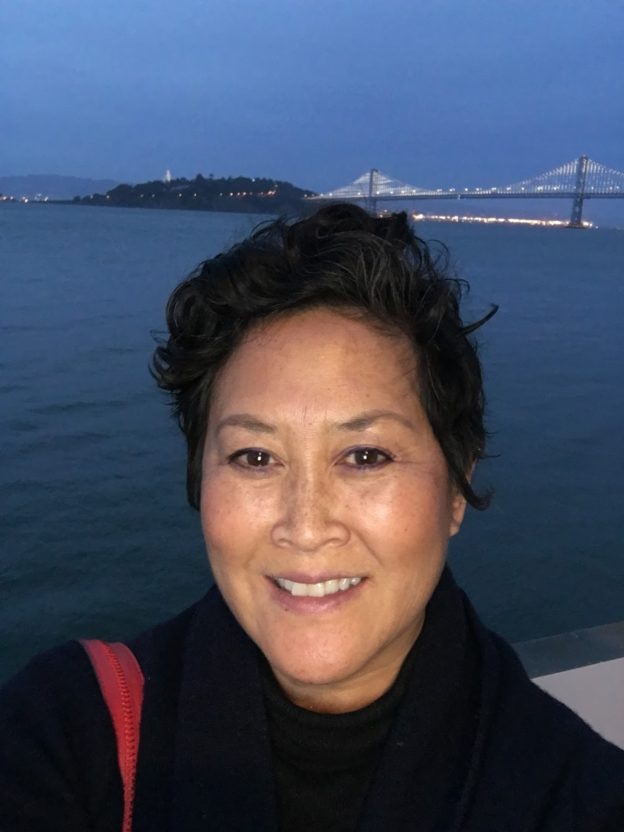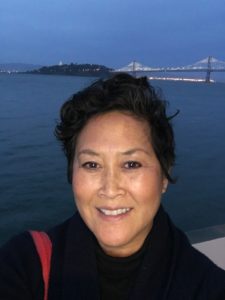

When I was writing dance reviews for the San Francisco Bay Guardian and other local and national publications in the late 1990s and early 2000s, I thought I was one of the more dancer-/choreographer-friendly critics. But looking back through those reviews, I did not find a dancer’s dance critic there. I found neither an open mind, nor a diplomatic pen, nor a generous heart. Instead, I found a voice performing its authority. And I rue many of those journalistic performances.
One of the reviews I regret the most was of Sue Li -Jue’s Facing East Dance & Music (FEDM) performance of The Nature of Nature (2001). I won’t go into detail about the ways I would write that review if I could turn back time. I was mean. I didn’t understand. I was mean because I didn’t understand.
When my review of The Nature of Nature came out, Sue called me right away. “Why do you hate me so much?” she asked. Hate her?! Well, revisiting the review I can see why she felt that way. So we met for coffee. I was humbled by her willingness to confront bad press head on and face to face. I still wasn’t totally convinced critics and choreographers should be having those sorts of conversations, but my grasp on the relationship between these two historical adversaries had begun to slip.
Fifteen years later, I contacted Sue to process again. (She was over it. I was not.) I wanted to let her know that I’d thought about that review and our conversation numerous times during my graduate training—in fact, it was while writing my dissertation that I came upon Yutian Wong’s critique of my review in her excellent book Choreographing Asian America, sparking an extended reflection on my dance critical career and the role of the dance writer. As she had fifteen years prior, Sue met me with generosity and openness. She’s rather badass that way.
During our conversation this past May, I learned that after 32 years, Sue is retiring from the Physical Education Department at UC Berkeley. So this article now has a dual purpose: to offer readers insight how The Nature of Nature came to be—giving it the attention I now believe every work deserves, attention to process—and to pay tribute to Sue’s service, her unwavering commitment to dance in higher education, and her enduring love of dance.
The Nature of Nature: Backstory
The Nature of Nature was born out of an encounter with a San Francisco Examiner article about fashion designer Colleen Quen and her husband, furniture designer Rick Lee. Quen, who has designed costumes for several of Alonzo King LINES Ballet works, was discussing a 2000 collaboration between her and Lee around the theme of the five Chinese elements—metal, wood, earth, water, and fire. Sue said, “She made gowns and he made furniture. My husband, Richard, read the article and said, ‘You have to read this. It sounds like a mirror image of us!” (Richard, an optometrist by day, had been making sets for Sue since the founding of Facing East Dance & MusicFEDM in 1999.) Inspired by Quen’s story, Sue gave her a call: “We talked for 45 minutes. I had been considering a piece about the five elements—how they relate to nature, personality, physicality—so I asked her if she wanted to do the costumes. And she did.” Quen also made the costumes for FEDM’s 2003 Held So Close, a piece about Angel Island, which Sue worked on for two years in collaboration with the Angel Island Immigration Station Foundation.
With Asian American scenic collaborators, Sue also came into contact with Somei Yoshino Taiko Ensemble—“At the time, it was like, Wow! Taiko! Who does that? Now, everyone!”—and decided to hire only Asian American dancers. But she got significant pushback from presenters, granters, donors, dancers, and both artistic and academic mentors: “A lot of people were saying, ‘You’re not making Asian American dance, you’re just making modern dance.’ And some people were like, ‘You really ought to get off the Asian thing.’ And I thought, Wow! You don’t think it’s necessary that I explore this?” I asked Sue what she makes of this response with 20/20 hindsight: “I’m not really sure what they meant, but it was very important to me to have all Asian dancers, yes, for a visual look, but it was also an understanding. I mean, I’ve never picked rice in a rice field, I’ve never lived in China, but there’s some kind of a thread there, through your parents, through your genealogy. I’d say my more successful years were those beginning years when I was hot and heavy to do that. When I loosened my grip on the importance of an all Asian company and doing every work about Asian Americaness, I felt less urgency and focus for making dances.”
Despite ramping down her choreographic practice, Sue continues to face East to keep herself grounded and inspired.
Physical Education at Berkeley
Sue started ballet and tap when she was six, and took her first modern dance class at Mills College with June Watanabe, whose company she joined in 1982. While dancing for June, company member Aida Pisciotta, who had been teaching in the Physical Education department at UC Berkeley, declared that she would be moving to New York “to seek her dance fortune.” The department hired Sue for one semester to teach jazz and modern. Aida stayed in New York; Sue stayed at Cal.
Sue spent her first two years at Berkeley as a Visiting Lecturer, becoming a Continuing Lecturer after the campus changed their policy: “They said that they were losing too many good lecturers with the two-year cap. I had to reapply through a search and I’ve been there ever since.” Once Sue completed six years as a Lecturer, she was given a renewable three-year contract, and considers herself “fortunate” to have had her contract renewed over and over again
Within the context of adjunct precarity, Sue and her colleagues also carry heavy course loads. When she began, PE dance lecturers taught 10 two-hour classes a week. Then it went up to 11. Then 12. “When it got to 13 we were all dying and injured, so they brought it back to 12. Jason Brittoen [PE Lecturer] rallied through the union to get us down to 11. So that’s where we sit now. That’s a lot of dancing.” Plus, those are 11 different classes, e.g. modern dance levels 1-4, jazz levels 1-4, etc., taught to as many as 40 students at a time.
When she first came to PE, it was a degree-conferring department with graduate student instructors (GSIs, also known as TAs), comprised of lectures, labs, and activity sections. At the time, you could get a Bachelor of Science degree in PE with a specialty in dance. But then the tenured faculty, who were teaching science-based movement classes, moved out of PE into Integrative Biology/Molecular and Cell Biology, taking their lectures and labs with them. PE was left with the activity sections— tennis, swimming, dance, etc.—and these courses became “merely” recreational, offering elective credit towards graduation. The disestablishment from department to program meant the remaining faculty “had no leg to stand on.”
When PE director Kathy Scott, the program’s last tenured faculty member, stepped down as director two years ago, Sue stepped up—unwillingly. Having no aspirations to becoming director, Sue put her name forward under the assumption that she would be co-directing with another colleague. When that colleague neglected to put her own name forward, Sue was hired. “I’d always said there’s no way I’m ever going to direct this department. But I said, all right, I’ll do it for a year.” A year became two, and although the pay raise is nice and teaching 4 rather than 11 classes a week a relief, Sue finds herself “administrating like crazy. It’s not really me.”
When Sue decided to step down as director she realized she’d have to retire because she couldn’t imagine going back to teaching 11 classes per week. But Sue is hardly done moving and shaking. She is recently certified in Kinesiological Stretching Techniques and feels like she has a second career in her: “Maybe I can share this work with students who, these days, are so out of their bodies.”
***
When I encountered The Nature of Nature in 2001, I had neglected to consider the concept of hybridity. I was looking for a certain authenticity, which now is the dirtiest word in the book, because what the hell is it and who the hell gets to decide? Further, back in the day, I didn’t think backstory should be part of a critical view. Now I have the exact opposite opinion. Pretending a work exists in a modernist vacuum is ridiculous. By reaching out to me to discuss my review, Sue became the first catalyst for my turn away from writing dance criticism from a position of authority to writing dancing as a conversation with dance makers and thinkers. And for that, I am forever grateful.
This article appears in the December 2017 issue of In Dance.


